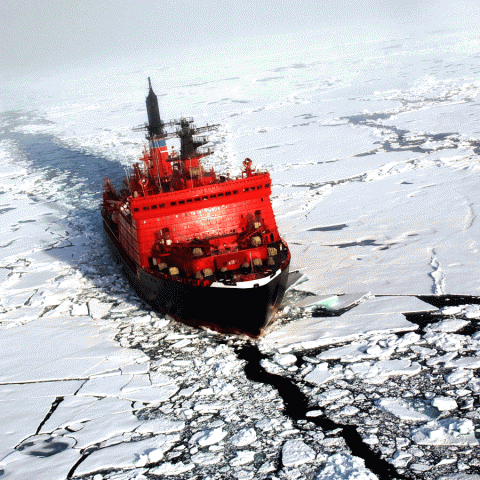Ever since the discovery of large quantities of natural resources in arctic environments, governments have been attracted to further exploration and development of oil. In addition to the demand for oil, the potential for minerals, fisheries, marine transport, scientific exploration, and research are also increasing. Expeditions with vessels, equipment and personnel face obstacles that come with the harsh climate and extreme temperatures.
Offshore vessels have many challenges, but more so when the weather turns cold. Find out how industrial heating solutions can help.
How Do Cold Temperatures Affect Offshore Vessels?
Sub-zero temperatures and ice can have a severe impact on the operations of offshore vessels in many geographical areas. Many of these operations are often remote with limited navigational and support infrastructure. The routes taken by vessels can be treacherous as the frequency and number of icebergs changes. Land transportation gets complicated in the summer, when the top layer of the permafrost melts into mud and may be unable to support heavy machinery and equipment. Weather conditions are also becoming unstable and less predictable as the weather patterns change. Additionally, ocean wave motion and forces are increasing as the polar ice cover reduces.
These harsh environments require specially designed equipment, vessels and disaster-prevention measures to be in place, causing increasing demand on engineers to meet the challenges offshore exploration faces. Whether it’s the risk of capsizing or machinery malfunctions, the risks that need to be addressed for operating vessels in these environments are a constant concern.
How Can Heat Trace Technology Help Offshore Vessels?
In modern times, most offshore vessels are now outfitted with state-of-the-art technology and have proper procedures in place as well. The requirements are massive not only for the vessels but also for crews. Personnel safety risks are greatly increased in these areas and disasters are often intensified due to the lack of response-ability from emergency teams in these remote areas. However, even with all of this protection put in place, the risk remains. Unfortunately, there have been many accidents caused either directly or indirectly due to extreme weather conditions. Even though many of the vessels traveling through these areas have modern winterization protection, the constant threat of the sub-zero temperatures is still a great danger to vessels and the crews aboard.
The demand for oil is staggering and will require further exploration of these arctic areas to meet the world’s requirements for it. Great progress has been made in the past few decades but further advancement in equipment to withstand ice, snow, wind and other extreme elements to protect personnel is necessary.


